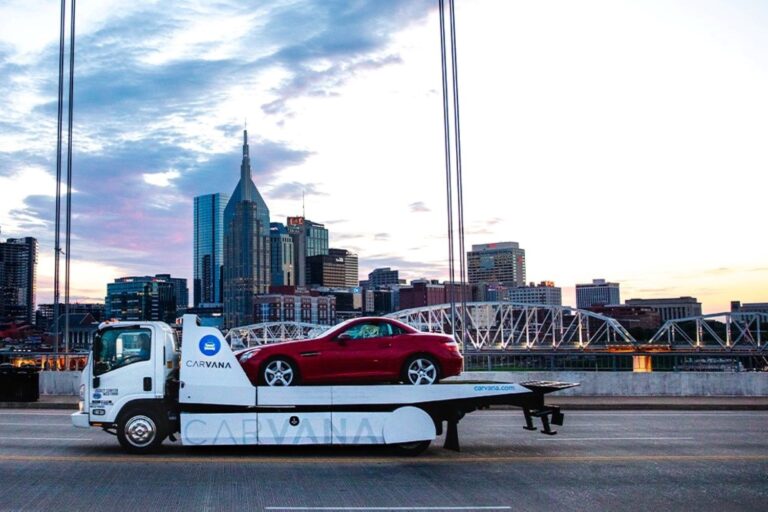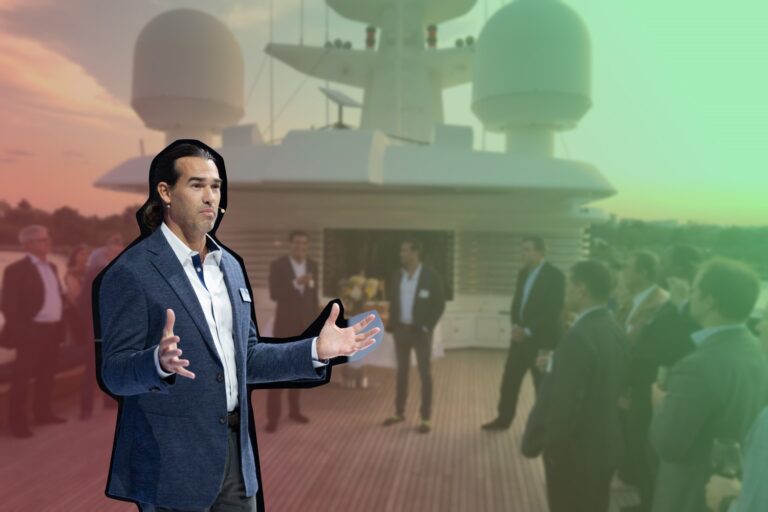Good News – Supersonic Plane is Making a Comeback
Between January 21, 1976, and October 24, 2003, the Concorde was the world’s only commercial supersonic passenger plane. Currently, a flight from New York to London takes around seven hours, but the Concorde could make the trip in just three and a half hours before its retirement. This capability marked a major leap forward in the aviation industry. Everyone prepared to enter the door of a new era, and then, that door just closed before anyone walked in.
In 2003, Concord retired after a fatal accident. Since then, the story of supersonic plane has remained ideas. Fast forward to 2024, many headlines had popped up, claimed that the race for supersonic aircraft is making a comeback, from NASA to Hermeus, to name a few. This seems to pull the reality of boarding a supersonic plane closer to us.
That’s the part that we will talk later. First, let’s look at how supersonic technology has been failing and how new advances has come to tackle the pain points.
The Deadly Race to Supersonic Flight – Why Did We Failed?
Supersonic flight is one of the four categories of flight speeds, known as the regimes of flight. These regimes are subsonic, transonic, supersonic, and hypersonic. Supersonic speeds are those that exceed the speed of sound, which is approximately 768 miles per hour (1,236 kilometers per hour) at sea level.
These speeds are measured using Mach numbers, which represent the ratio of the aircraft’s speed to the speed of sound. When an aircraft flies faster than Mach 1, it is in the supersonic regime, which includes speeds up to Mach 5, or five times the speed of sound.
The aviation industry has been a crowded place with companies chasing the dream of flying faster than the speed of sound, we actually had some notable projects, but they all ended up in tragedy.
Yearslong Failure Chasing Supersonic Dream
First, let’s talk about Germany, their engineers were actually the first to explore the possibility of supersonic flight, they had a design called Messerschmitt Me 163 Komet. A prototype Me 163A in 1941 was the first plane to exceed 1,000 km an hour, then the Me 163B surpassed the record with 1,130 km an hour.
Although close, this is still below the speed of sound. The Me 163 couldn’t reach supersonic speeds because it had some major problems. Aside from being a death trap, when it got close to the speed of sound, it would shake so violently that the vibrations would cause structural damage, and those same vibrations could lead to a loss of control.
The Germans weren’t the only one trying to gain the upper hand with supersonic technology. In 1941, while the world was still at war, the British Government was desperate to gain an edge over Germany in the air.
So they started a secret project, the goal was to make the world’s first supersonic aircraft. The project was led by two brothers, George Miles and F.G. Miles, the result was the M.52 – a turbojet-powered supersonic research aircraft.
The M.52 has an all-moving tail which was needed for high speed control. The aircraft was meant to fly at 1000MPH (Mach 1.4), reaching an altitude of 36,000ft in less than 2 minutes.
It was a bold and ambitious project, but it faced a whole bunch of engineering problems, that’s why the project kept stalling.
The M52 design was nearly complete by 1944. Then, in a startling turn of events, the English government abruptly canceled the project at the beginning of 1946, just weeks before the first scheduled flight of the M52. The official reason cited doubts about its feasibility and safety, though some historians speculate that budget cuts or external pressure may have played a role.
Meanwhile, across the Atlantic, the Americans was also working on their own supersonic project. And when talking about American supersonic, we need to mention the Bell X-1, the America’s first rocket-powered research plane.
The X-1 was designed to push the unknown limits of high-speed and high-altitude flight with a superbly designed airframe and liquid-fueled rocket motors.
In 1946, they already began test gliding. Jack Woolams, who had completed the test flights, was unfortunately killed in an unrelated incident in his own test aircraft. Williams’s death was a sad tragedy and a setback that would delay the supersonic flight testing.
However, testing would soon resume with a new pilot, Chalmers “Slick” Goodlin, he completed 26 flights, including glides and subsonic tests, but he never got to fly supersonic.
The Air Force took over the testing from Bell because they were unhappy with the slow progress. Goodlin was then replaced with First Lieutenant Chuck Yeager, the famed name that has been told in numerous books, articles, documentaries and movies of how he broke the sound barrier.
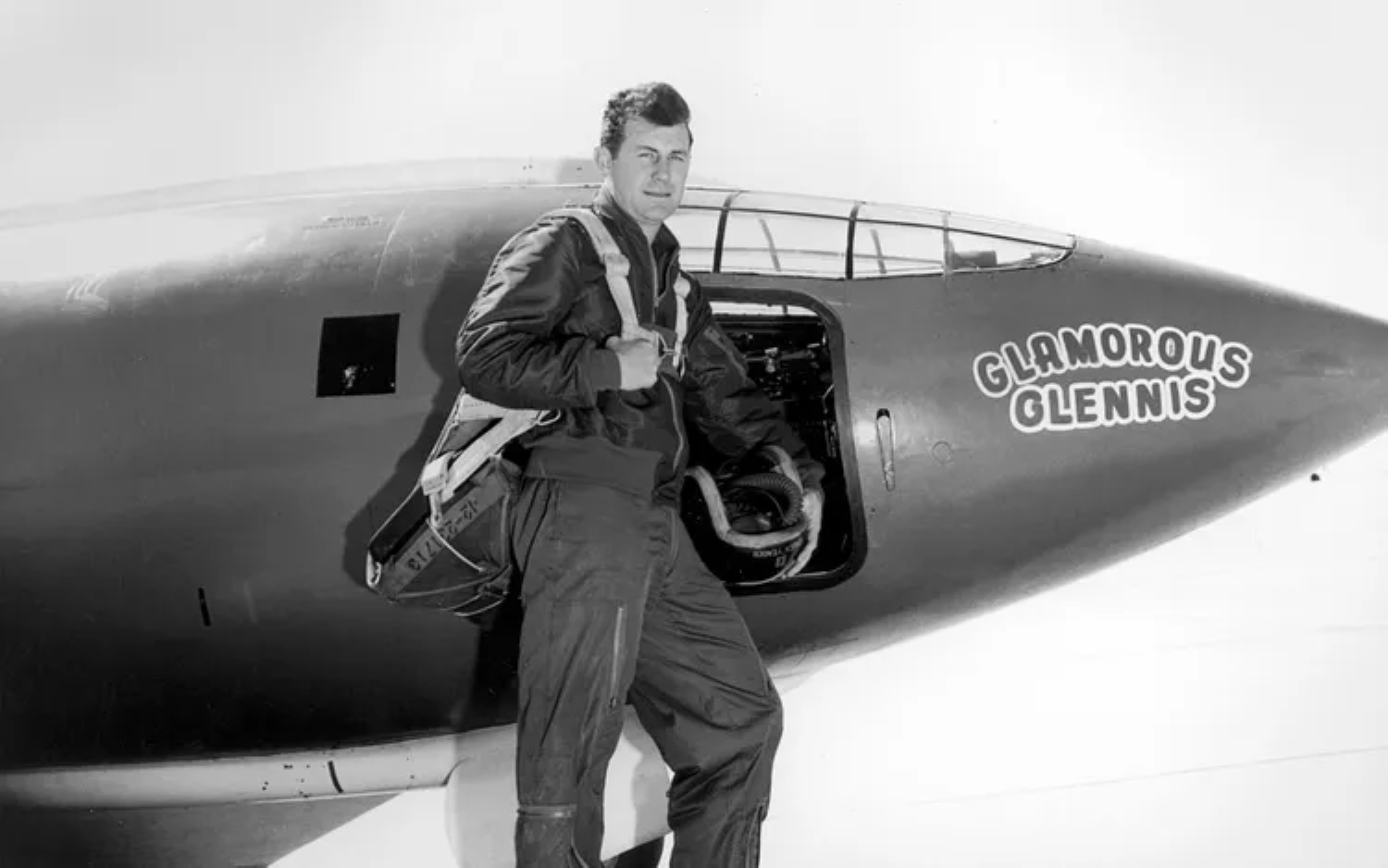
The historic flight took place at Muroc Army Airfield on October 14, 1947 with Captain Chuck Yeager at the controls. Over the next several years, a variety of X-1 derivatives were developed and used for aeronautical testing.
The Bell X1 became an icon of supersonic flight and was donated to the Smithsonian Institution in 1950, where it’s still on display today.
Aside from the X-1, we have a few more. From the North American X15 to the Lockheed SR-71 Blackbird and the Rockwell B-1 Lancer, a range of aircraft have marked milestones in supersonic flight and military capabilities. Modern fighters like the F-22 Raptor and the F-35 Lightning II, alongside legendary models from various countries, continue to push the boundaries of aviation performance and technology.
So, that’s all in the military, but what about the civilian side of things?
You’ve all heard of the Concorde. It was a supersonic passenger airline service flying from 1976 to 2003. It began as a joint venture in 1956 between France and England. It crossed the Atlantic in less than half the time of a conventional aircraft. However, the Concorde was famously retired in 2003 after a fatal accident.
In 1961, the US government awarded contracts to Boeing and Lockheed Martin to build supersonic aircraft, but budget cuts halted both projects. The former Soviet Union then entered the race with the TU-144, the world’s first supersonic transport aircraft, flying two months before the Concorde in 1968.
While it outperformed the Concorde with a top speed of Mach 2.15, the TU-144 faced challenges including poor handling, engine reliability issues, and high fuel consumption. Tragedy struck in 1973 when a TU-144 crashed at a Paris Air Show, killing all six crew members and eight people on the ground, leading to concerns about its safety and performance among potential customers.
So, what went wrong with these supersonic planes?
What Makes All the Hopes Ended in Tragedy?
As an object nears the speed of sound, molecules compress and it creates a shockwave, the very same type of wave that Ernst Mach took a photo of in 1887. This wave causes a sudden rise in temperature and pressure, affecting the object’s aerodynamics and stability.
The phenomenon leads to less lift, more drag, and violent vibrations. This was a new realm that needed a solid theory. Scientists like Ernst Mach had some ideas and equations of how shockwaves worked back in the 19th century, but it took decades of hard work by researchers from different countries to really figure it out.
Every plane used propellers to fly. As it turns out, when a propeller-blade aircraft reaches close to the speed of sound, the propellers lose their efficiency and sometimes tear themselves apart.
Wings would abruptly lose lift, and the control surfaces would stop working, effectively causing planes to fall out of the sky. Sometimes, catastrophic failure would occur, and the plane would simply break up.
When it comes to commercial supersonic aircrafts, the planes were extremely expensive to make and maintain. They were fuel-hungry and loud, and routine sonic booms caused health and environmental concerns. It can cause stress to people and animals and even damage nearby buildings. These factors have led to the prohibition of routine supersonic flight over many land countries.
Supersonic Flight is Making a Comeback
Since these catastrophic failures, many thought that we would never get to the point where we can travel on a supersonic plane, but the recent headlines have been reviving this passion again. Here are some new ongoing efforts to revive supersonic transport.
Boom Supersonic and the Overture
Founded in 2014, Boom is working on developing a new generation of supersonic passenger jets to sell to airlines. A significant milestone was achieved in March 2024 when the company’s prototype aircraft, the XB-1, successfully completed its first flight. Boom’s ultimate goal is to introduce Overture, the first commercial supersonic aircraft since the Concorde ceased operations 20 years ago.
The company has already secured contracts with major airlines such as American and United and has partnered with Florida Turbine Technologies and GE Additive for manufacturing and development.
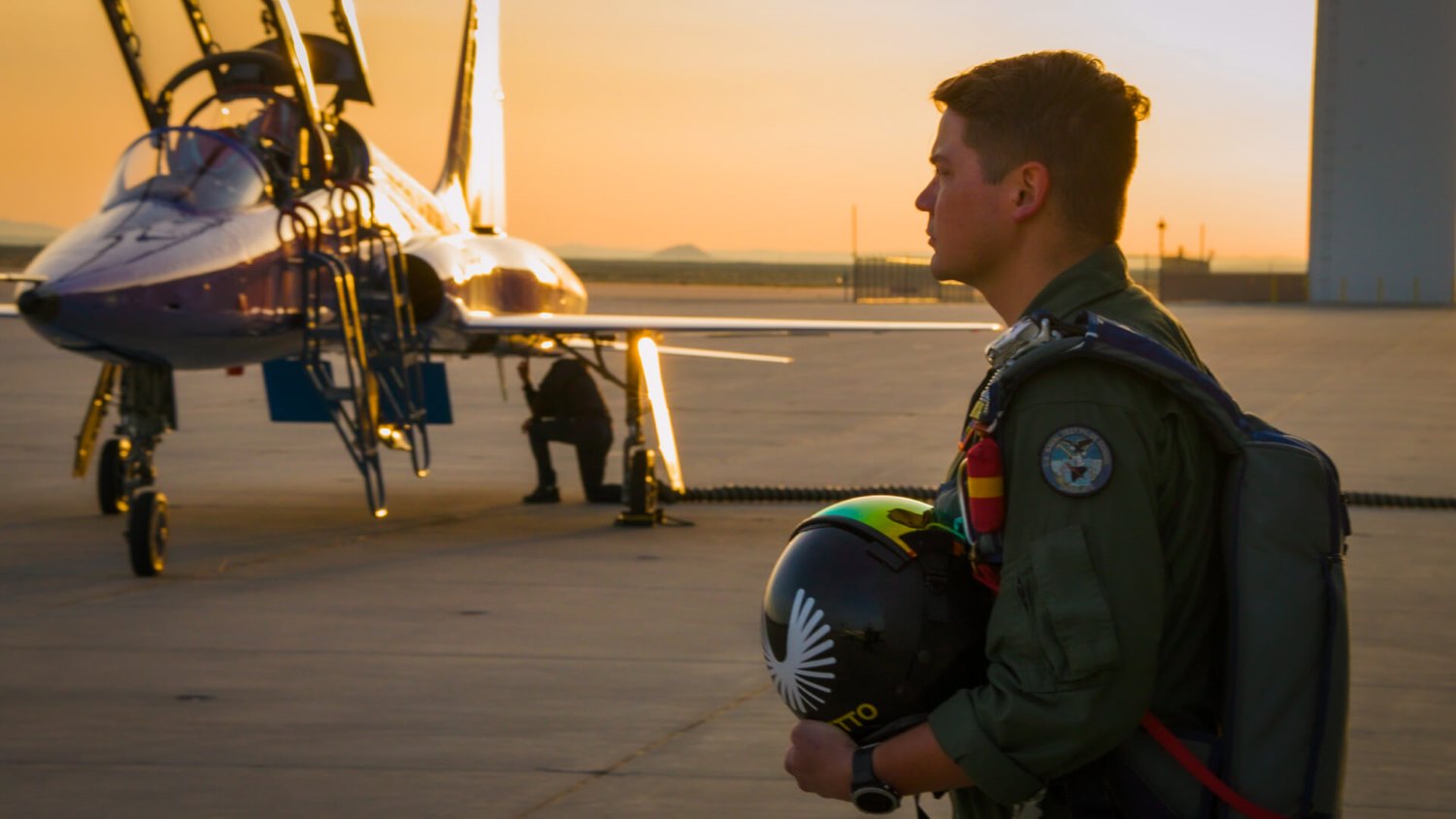
However, recent developments have included significant setbacks, such as the loss of partnerships, most notably with Rolls-Royce. The British jet engine manufacturer ended its collaboration with Boom in 2022, forcing the startup to develop its own engines. These new engines, named Symphony, are not used in the XB-1.
Instead, Boom’s demonstrator aircraft, originally planned to fly in 2017, is powered by three J85 turbojet engines from the 1950s, similar to those used in vintage aircraft like the Northrop T-38 trainer and F-5 fighter. The Overture, Boom’s full-size supersonic commercial airliner, will feature four of the Symphony engines, which are currently still in development.
In an interview prior to the flight, Boom CEO and founder Blake Scholl stated that each Symphony engine will produce approximately three times the total output of the XB-1’s three J85 engines.
Nasa and Lockheed – The X-59 Quesst
In January 2024, NASA and Lockheed Martin officially unveiled the X-59, a unique experimental aircraft designed for quieter supersonic travel with significantly reduced sonic booms. This groundbreaking aircraft is set to make its first flight later this year, aiming to demonstrate the potential for less disruptive supersonic travel.
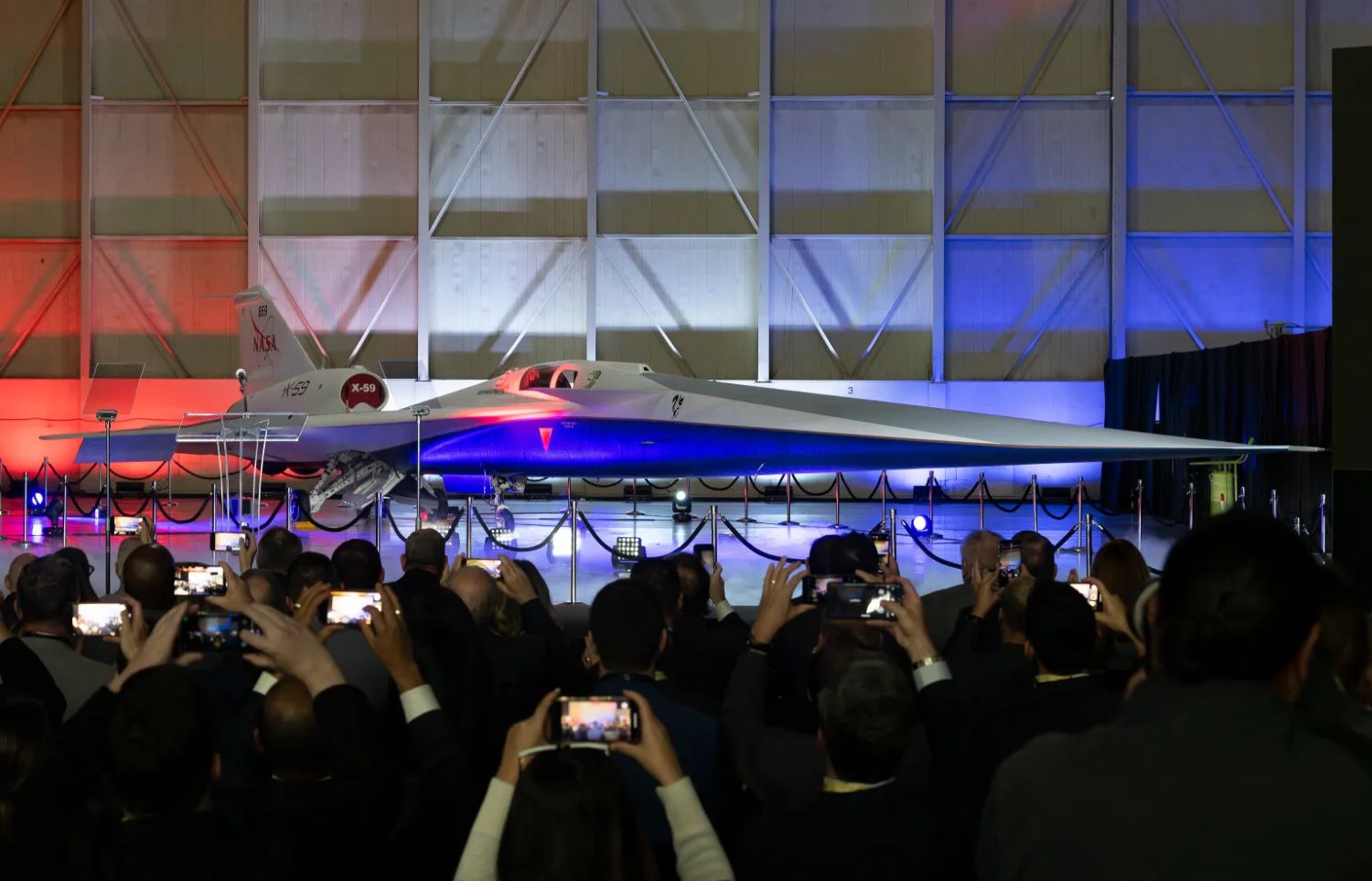
According to NASA Deputy Administrator Pam Melroy, “The challenges of Sonic booms accompanying supersonic flight we’ve talked a little bit about it. So, this design is really critical in dispersing shock waves, which today shocks are formed around the aircraft, and then they merge together to give that boom. By designing it to disperse those, they never merge together, and that’s how they solved this problem.”
Hermeus – Conquering the Mach 5
Last but not least, Hermeus, an American company that wants to make hypersonic jets that can travel at Mach 5, first for military applications and then later for commercial travel.
As of March 2024, Hermeus has unveiled its first aircraft, the Quarterhorse Mk 1, which is scheduled to fly later this year. Remarkably, this aircraft was designed, built, and integrated in just seven months. It is the company’s second fully integrated vehicle within a year, following the Quarterhorse Mk 0, which completed its test campaign in November 2023.
This rapid pace sets a new standard of developing one aircraft per year. Each aircraft in the Quarterhorse program increases in complexity, leveraging insights from previous models. This iterative approach helps manage program risk across multiple vehicles and accelerates the delivery of products and services to Hermeus customers.
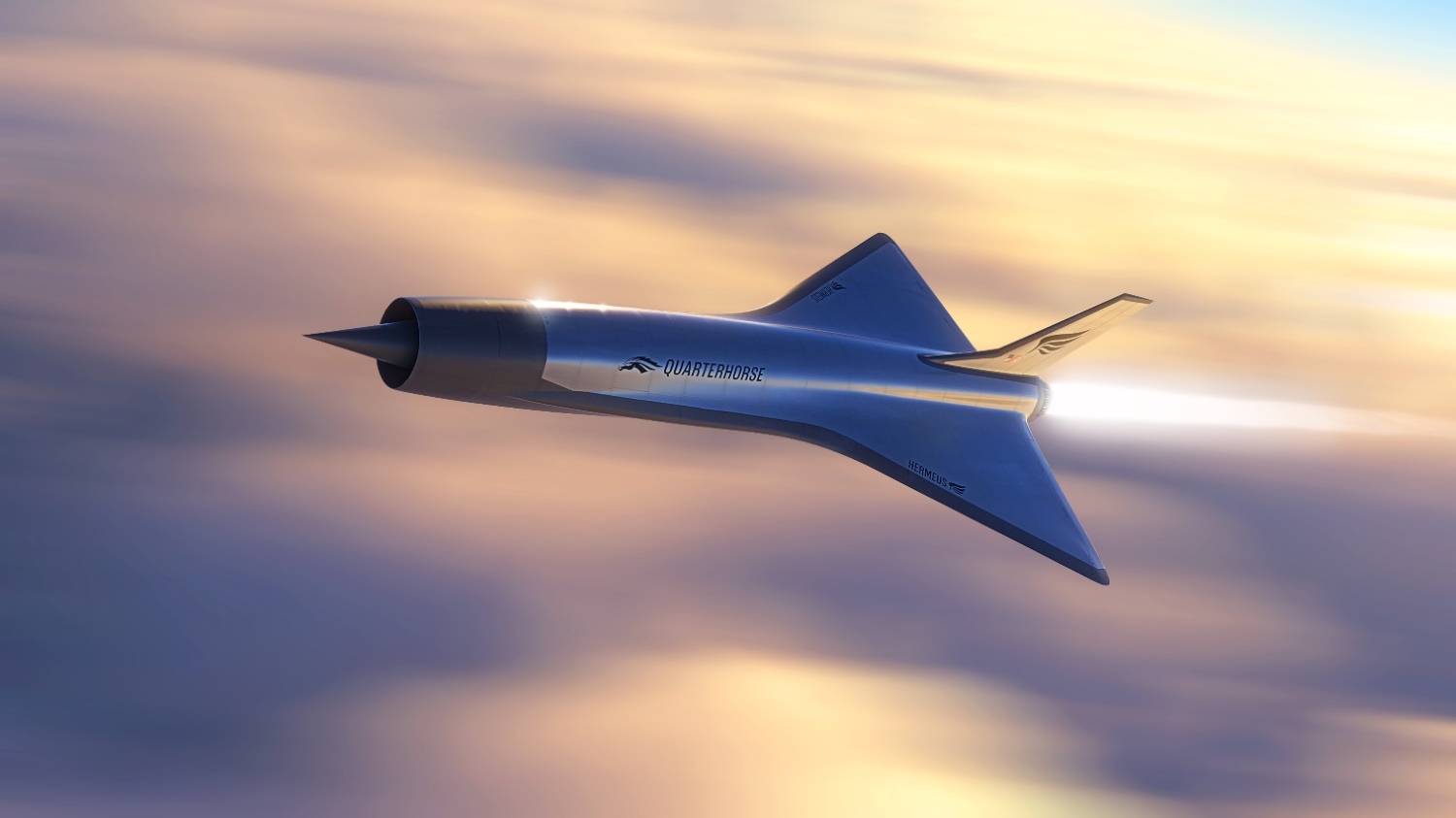
“The most unique and important aspect of our approach to developing a hypersonic aircraft is our rate of iteration – designing, building, and flying an aircraft in less than a year, every year,” said Hermeus CEO and Co-Founder, AJ Piplica.
He added, “It’s a pace that hasn’t been seen in the aircraft world for half a century. This approach has been proven successful in delivering massive improvements in the capabilities of rockets, satellites, and small drones. We’re now bringing that power of iteration speed to aircraft. It’s a capability that is absolutely necessary for solving the challenges of operationalizing hypersonic aircraft.”





